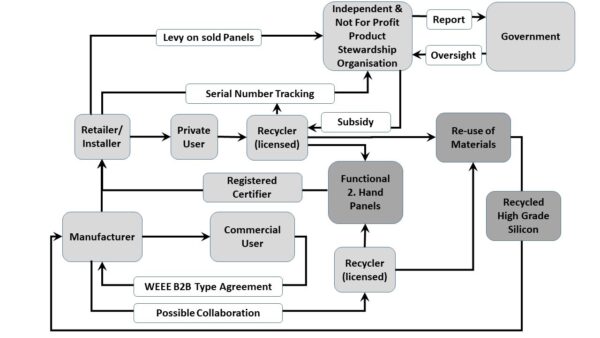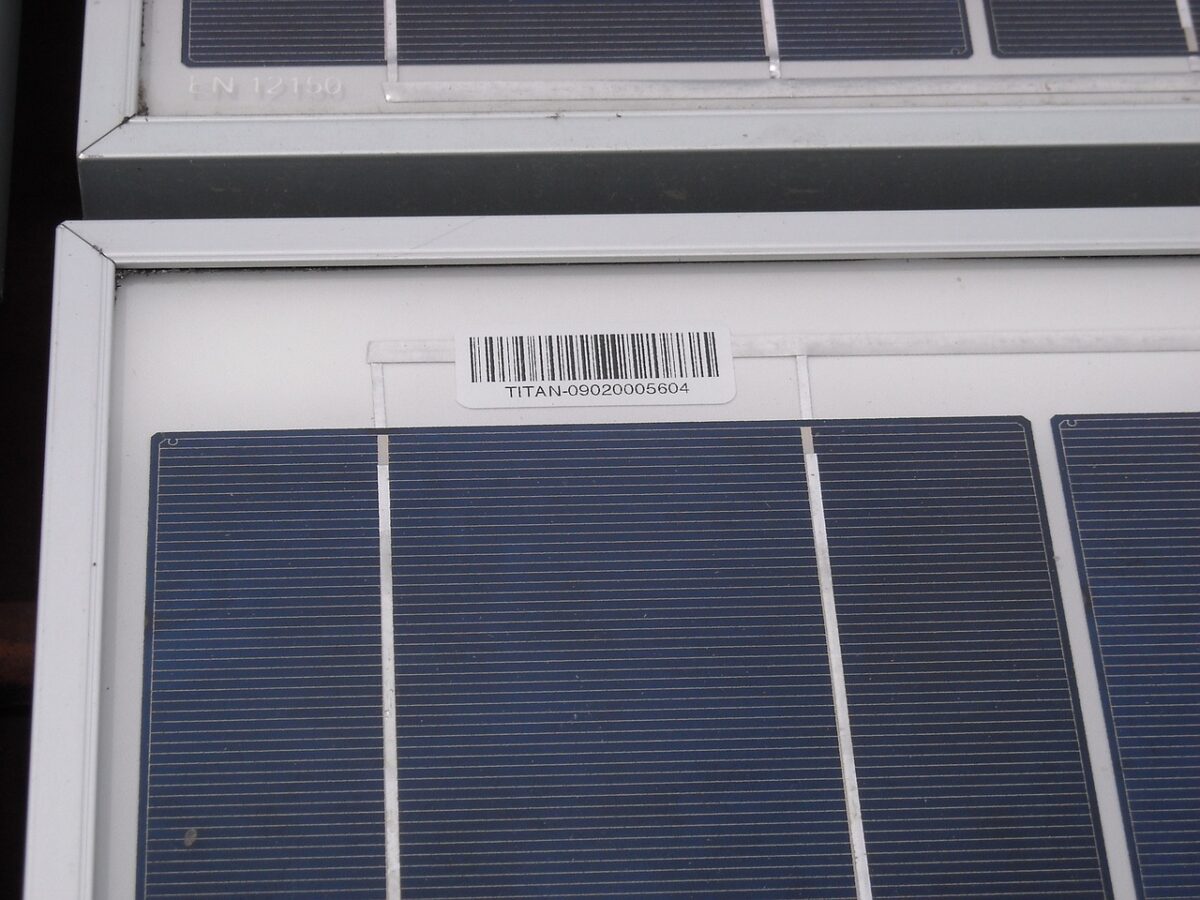A research group in Australia has defined a series of recommendations for the design of a product stewardship scheme for solar photovoltaic panels and its financial support. Product stewardship consists of a series of actions aimed at preventing waste during the design and manufacturing of a process in an effort to minimize the health, environmental, and social impacts of a product.
“Our work presents a comprehensive product stewardship scheme for solar PV panels, which is, as far as I know, the first one published,” the research's lead author, Peter Majewski, told pv magazine. “It covers new and legacy panels and provides a solution for covering costs.”
In the study “Product stewardship scheme for solar photovoltaic panels,” published in Current Opinion in Green and Sustainable Chemistry, Majewski and his colleagues explained that a well-designed stewardship scheme should define unequivocally which are the responsibilities of the industry and which are those of consumers in regard to the end-of-life management of a given product.
They also said that, as a rule of thumb, landfill bans, tracking of the panels' serial numbers, and a clear definition of ownership should always be included in the legislation for end-of-life solar products. Furthermore, they said that a Product Stewardship Organisation (PSO) should report to the government on the results and effectiveness of the scheme.
“Once the panels are installed on a rooftop of private dwellings, their operator is obviously the owner of the dwelling,” they explained. “However, once the panels are dismantled and on their way to a recycler, ownership and responsibilities for the proper handling of the panels needs to be clarified. In case of commercially used solar PV panels of solar farms, it can be expected that business agreements between panel manufacturers and solar farm operators clarify the ownership and end-of-life arrangement for the panels before solar farm gets planning approval.”
The scientists created a workflow diagram showing the flow of panels from retail to the customer and to the recycler. The upper part shows how panels may be recycled or re-used as second-hand products, while the lower part shows the B2B arrangement between manufacturers and PV system owners.

Image: University of South Australia
The Australian group also explained that all new legislation for end-of-life panels should also apply to modules that are already in operation, considering both their recycling and re-use, and should also avoid calculating recovery rates in terms of weight, as this system may encourage the recycling of “heavy” components only.
As for the re-use of the panels, the academics warned that these should be linked to an electric compliance certificate provided by a certified electrician, which would ensure their safe operation. “Consumers of second-hand solar PV panels need to be certain that the second-hand panels are still working at a defined capacity,” they stated. “Therefore, a certificate would be necessary that provides information about the capacity and age of the second-hand panel.”
The Australian team also sought to define the level of the levy needed to put the scheme in place and said it should be continuously adjustable to ensure high collection and recycling rates. “A fully funded not for profit PSO, which is overseeing and managing the product stewardship scheme, usually achieves high collection rates,” they emphasized. “It can, therefore, be recommended, that the levy is set at a level which not only allows to support collection and recycling of the panels, but also provides funds to support the operations of an effective PSO.”
As a final warning, the researchers said that any legislation for PV module recycling and re-use should be in place before significant amounts of solar waste are generated.
The research group comprises scientists from the University of South Australia, the University of New South Wales (UNSW), US-based PV module recycling company Solarcycle Inc., USA, and Australian association Circular PV Alliance (CPVA).
This content is protected by copyright and may not be reused. If you want to cooperate with us and would like to reuse some of our content, please contact: editors@pv-magazine.com.




2 comments
By submitting this form you agree to pv magazine using your data for the purposes of publishing your comment.
Your personal data will only be disclosed or otherwise transmitted to third parties for the purposes of spam filtering or if this is necessary for technical maintenance of the website. Any other transfer to third parties will not take place unless this is justified on the basis of applicable data protection regulations or if pv magazine is legally obliged to do so.
You may revoke this consent at any time with effect for the future, in which case your personal data will be deleted immediately. Otherwise, your data will be deleted if pv magazine has processed your request or the purpose of data storage is fulfilled.
Further information on data privacy can be found in our Data Protection Policy.